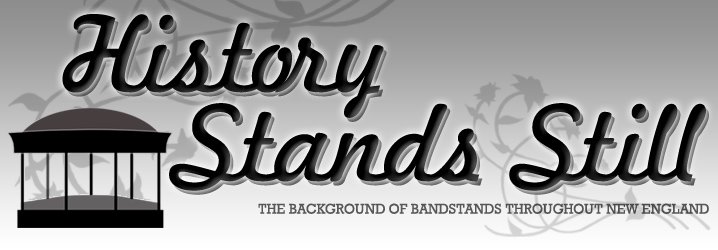KILLINGLY CT
Davis Park Bandstand
Davis Park
Built - 1894


Killingly is located in the northeast corner of the state of Connecticut in a region known as the "quiet corner" because of its rural nature. The history of the area is one of industrialism since the late 1700s when William Cundall established one of the earliest woolen works in the state. The residents of Killingly also played an important role in the advancement of the lives of African-Americans since during the 1750s, Israel Proctor deeded and willed his former Negro servants approximately ninety acres in Killingly which was probably the earliest farm to be owned by free Negroes in souther New England. A century later, Henry Hammond became a resident of the town and quickly became a very influential politician organizing the first anti-slavery society in Connecticut.
In the 1800s, textile mills started to be built along the Quinebaug and Five Mile Rivers and Whetstone Brook and in 1836, Killingly proudly proclaimed itself as the greatest cotton manufacturing town in the state. Railroad access in 1840 brought in immigrants from Quebec to work in the mills until the early 1900s when many textile manufacturers moved south where labor and operating costs were lower.
In the 1920s, Killingly became known as "Curtaintown, USA" after the firm of Powdrell and Alexander opened six curtain factories in town.
Killingly also boasts many prominent residents including Mary Kies, the first woman in the United States to receive a patent, and Charles Lewis Tiffany, founder of Tiffany's in New York.
In the summer of 1893, an interest in a bandstand arose for the town's popular Davis Park. Several hundred dollars was then raised and contractors were consulted and the planning stage began. Nothing happened for a few months until April of 1894. It is then noted in town records that during an April blizzard, interest resumed to build this structure for use during the summer and one could have seen Mr. J. Q. A. Stone "tramping around in the slush and the pneumonia blasts of the day, getting subscriptions for the bandstand." Results were good from Mr. Stone and others efforts and the assurance was given that with the aid of the Borough appropriations, the summer would see Davis Park adorned with a bandstand worthy of the site.
A further description of the bandstand was to be "an octagon, 20 feet square - a pretty problem for lovers of geometric problems." A very experienced contractor, Mr. Fisher, was hired and began work on the bandstand and gave the building of the structure a very special touch of hand-carved woodwork which was unfortunately vandalized in the 1970s. In 1965, the structure was repaired and repainted after years of wear, tear and the problems the town had with vandalism then again ten years later in 1975.
Needless to say, many bands have played on the stage over the long history of the bandstand including the earlier Mechanics Band and St. James Band and over the years the Killington High School Band, East Woodstock Cornet Band and the 102nd Army Band of Connecticut and the Army National Guard Band - to name a few.
Many special events have taken place on the structure including the early 1908 town's bi-centennial, the 1976 USA bi-centennial, Arts Festivals and the Springtime Festival along with the hundreds of concerts over the years. A special VIP - Congressman Robert H. Steele also made an appearance on the bandstand along with a few other notables.
INFORMATION SUPPLIED BY:
Marilyn Labbe, Researcher
The Killingly Historical &
Genealogical Society Library

No comments:
Post a Comment